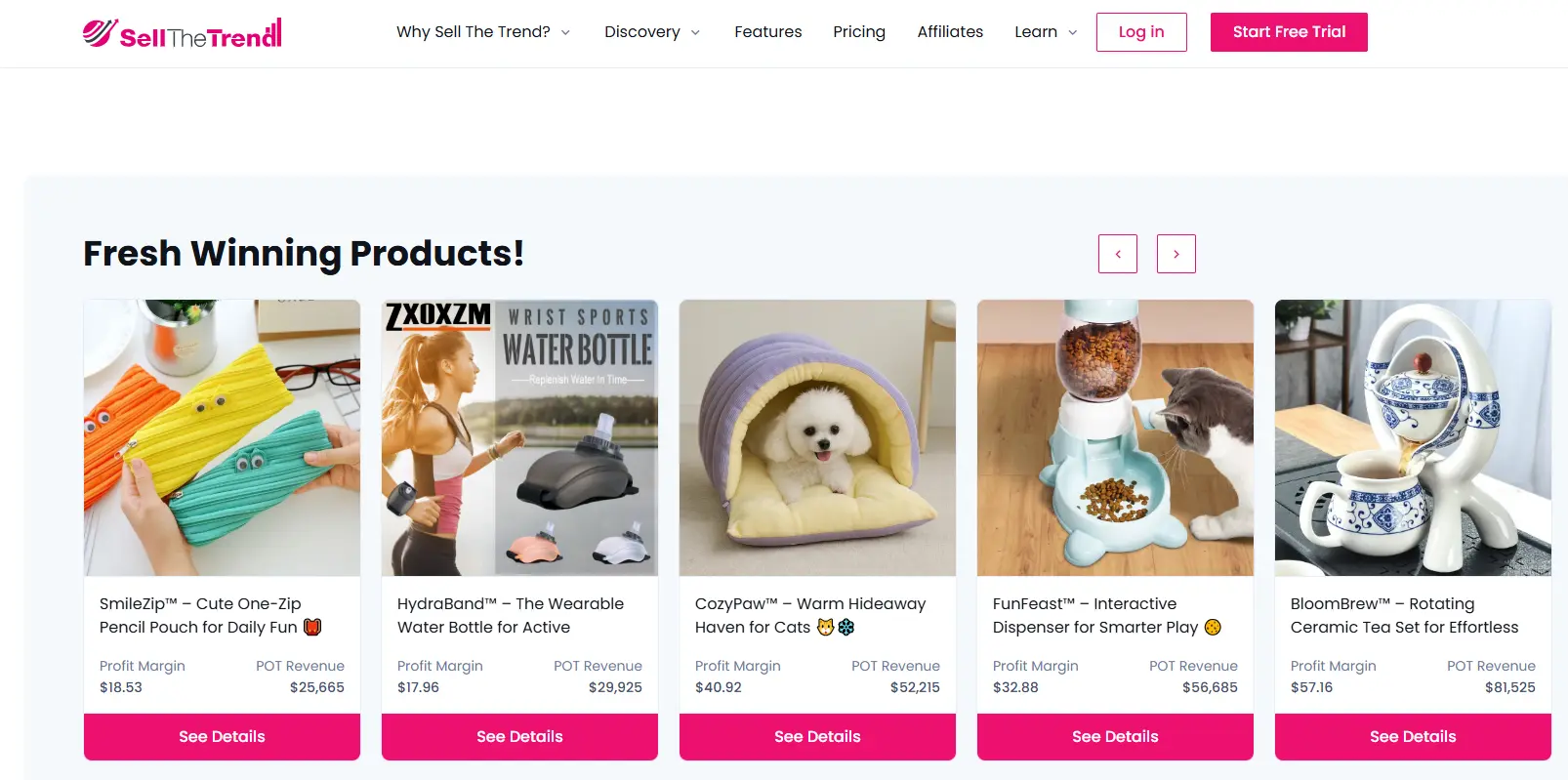How to Do AI for Dropshipping (7 Use Cases & Best Tools)
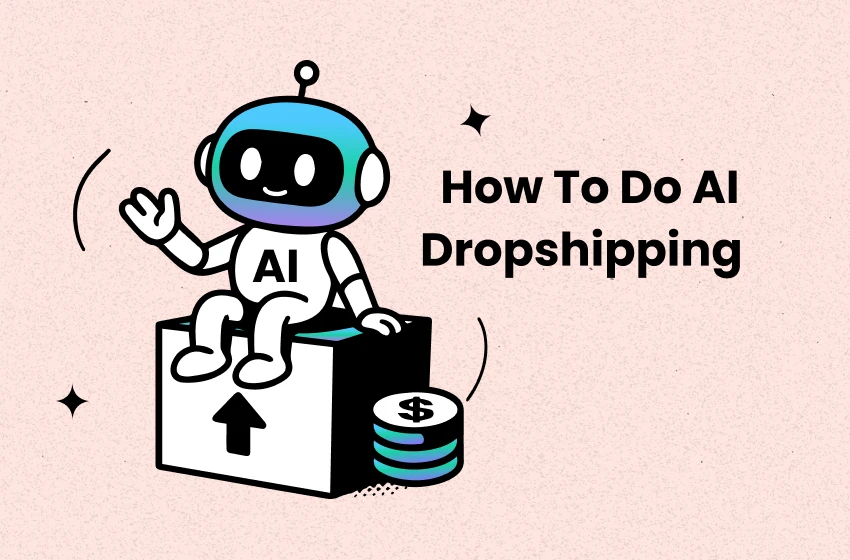
Artificial intelligence is changing the way merchants run their dropshipping businesses. Instead of relying on manual work or guess-based decisions, AI helps automate, analyze, and optimize every step — from product research to customer support.
If you’ve ever wondered how to use AI to make your dropshipping business more profitable, efficient, and scalable, this guide walks you through exactly that — with 7 practical use cases and the best tools to start using in 2026.
Top Benefits of AI for Dropshipping in 2026
By this time, AI is becoming the competitive edge for dropshippers who want to scale smarter. And here’s why:
1. Increase Business Efficiency
Running a dropshipping store means handling countless tasks, but not all of them directly impact your bottom line's performance. For example, tasks like updating inventory, fulfilling orders, or replying to the same customer questions are essential but time-consuming.
That's where AI is a game-changer. It steps in to automate these repetitive tasks, giving merchants back the time to focus on decisions that matter— testing winning products, improving ad strategies, and analyzing profit's insight. These human touch are what push store’s performance to the next level.
2. Stay on Top of Trends
In dropshipping, AI helps you most by suggesting trending products, high-demand niches, and viral ad campaigns. For example, AI can highlight emerging products that have high engagement on TikTok or Instagram, so you can quickly test it in your store.
By leveraging AI in this way, you reduce the risk of running outdated ad ideas and increase your chances of riding the trends before they saturate the market.
3. Reduce Simple Mistakes
AI can significantly cut down simple errors that often occur in repetitive tasks. However, its accuracy depends on the tool you’re using — some suggestions might still be off, so double-checking the final results remains essential.
In short, AI can help you automate repetitive tasks, stay ahead of early trends, and save you from some dummies' simple mistakes. That said, we don’t recommend you 100% rely on AI running your store. As of this time, AI isn’t perfect, and sometimes what makes your store truly successful comes from your real-life experience plus your careful decision making.
How to Leverage AI for Dropshipping: 7 Best Use Cases
1. Conduct Product Research
In dropshipping, product research is one of the most time-consuming yet crucial steps. With thousands of listings across marketplaces, endless ad examples, and countless blog reviews, many store owners still end up testing products that never take off.
AI makes this process smarter and faster by scraping product data across multiple dropshipping platforms — including AliExpress, Amazon, Etsy, Temu, eBay, and Shopify marketplaces — as well as social media and ad networks. So they can suggest the highest potential products for testing.
While AI cannot guarantee a 100% profitable product, it saves hours of manual work and helps you select products faster in this fast-moving dropshipping market.
To save time, you also can start off with our list of the proven winning products:
2. Automate Logistic Process
It’s hard to find a store that doesn’t use an automation app for logistics these days. It’s become a must-have AI-powered solution to manage inventory and keep track of every step — from picking and packing to shipping orders.
There are four main areas where AI makes the biggest impact in product fulfillment:
- Automating inventory management
- Controlling the order fulfillment process
- Simplifying returns and refund management
- Auto-creating purchase orders for suppliers
Manually doing these steps often leads to stock issues, order delays, and human errors. While with AI, you can double up your productivity and deliver the most accurate delivery service that keeps customers always satisfied with your store.
3. Create Product Content
Product content includes descriptions, images, videos, and ad creatives. AI can help with all of these, but its strongest advantage right now is in writing. Product content includes product description, product images/video, voiceovers and other product ad creatives. AI can help you with all but the best thing it can do right now is any task related to writing.
Unless you're a professional advertiser, we don't find the point of spending too much time writing product descriptions or ad copy in dropshipping stores. This simple task is exactly where AI performs the best thanks to its information from millions of proven eCommerce stores.
Keep in mind that you should avoid using AI to generate your advertising content entirely. Review the copy carefully and verify it with an AI Content detector before publishing.
4. Build a Store
Building a full storefront can feel too much for new dropshippers launching their first store. But with AI-powered store builders, this step doesn’t have to be that much stressful.
Today’s AI store builders offer intuitive drag-and-drop editors and a wide range of ready-made templates designed specifically for eCommerce. They can even suggest design layouts, color palettes, and product placements that fit your brand.
As a result, you can launch a professional-looking store in hours instead of days without needing any coding or design experience. It’s an easy way to focus more on marketing and product strategy, and less on setup.
5. Enhance Customer Support
When it comes to customer support, most merchants leverage AI in three key ways:
First, AI chatbots reply to customer questions instantly — anytime, day or night — ensuring your store is always responsive.
Second, AI tools personalize replies and can even create helpful articles or FAQs for your knowledge base.
Third, sentiment analysis powered by AI examines customer reviews, surveys, and chat logs to understand satisfaction levels and detect common issues.
With three basics covered automatically by AI, merchants can tackle more complex issues and deliver the thoughtful, personal care that turns one-time buyers into repeat customers.
6. Add Product Reviews
One of the fastest ways to increase conversions in dropshipping is through trust-driven proof — and nothing does it better than customer reviews.
AI makes collecting product reviews much easier. Instead of manually gathering reviews, these tools can automatically provide feedback from multiple sources. When every review on your page feels genuine and relevant, your store instantly looks more credible — and customers are more confident to click Add to Cart.
7. Generate Ads
Creating ad creatives and copy can feel like guesswork — especially when you’re testing multiple products at once. That’s where AI steps in.
With AI, you can instantly generate ad visuals, write catchy headlines, and test different formats across Facebook, TikTok, and Google Ads. It also helps analyze past ad performance and predict which creatives are most likely to convert, saving hours of trial and error.
Best Smart AI-Powered Tools for Dropshipping in 2025
1. Sell The Trend – Best for Product Research
Sell The Trend is a powerful product research tool that helps dropshippers discover and import winning products quickly. It eliminates guesswork by providing clear profit margin estimates, potential revenue forecasts, and real ad performance data for each product — enabling sellers to test faster and scale the true winners.
Best Features:
- AI scans millions of products across 80+ eCommerce niches.
- Identifies products that are actively going viral, complete with ad creative examples.
- Evaluates product potential using revenue, profit margin, and trend metrics.
- Finds high-rated suppliers and allows you to import products to your store in minutes.
2. Flair – Best for Product Content Generation
Flair.ai is an AI-powered design tool that helps dropshipping store owners create high-quality product visuals quickly. It eliminates the need for costly photoshoots, long sample waits, and tedious editing, while producing images and videos that look professionally shot.

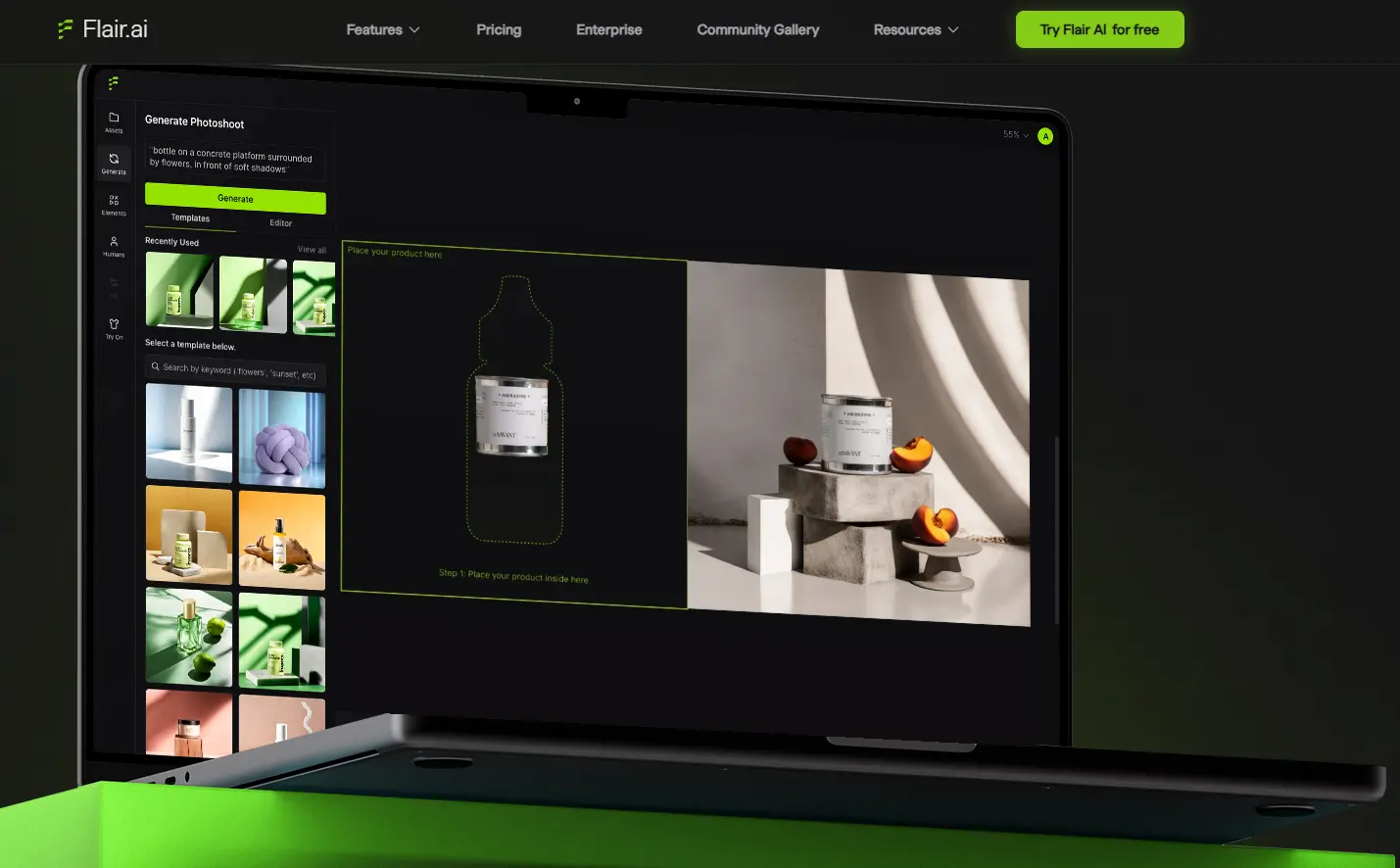
Best Features:
- Drag and drop products into ready-made videos, ads, and images.
- Customize props, backgrounds, and lighting to match your brand style.
- Display products on AI-generated human models that are virtually indistinguishable from real models.
- Access unlimited templates for ad variations on social media and landing pages.
3. ChatGPT – Best for Store Copy & Product Descriptions
ChatGPT, an AI language model by OpenAI, helps dropshippers create product descriptions, ad copy, and social media content quickly and efficiently. While ChatGPT relies on user input, or “prompts,” the clarity and specificity of your prompts directly determine the quality of the output. With well-crafted prompts, ChatGPT can produce highly effective content that supports both marketing and sales.

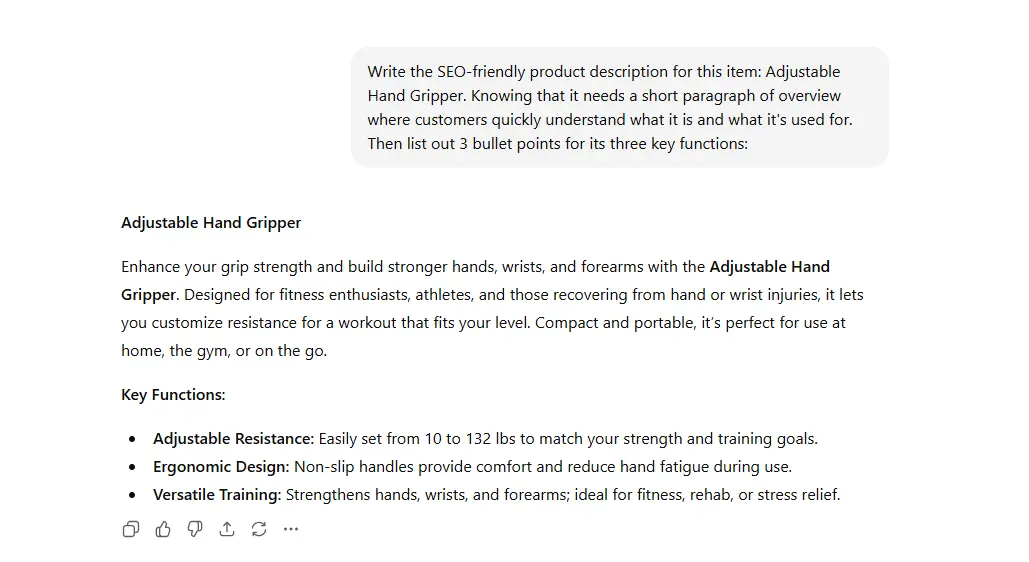
Best Features:
- Write SEO-friendly product descriptions that boost discoverability.
- Produce ad headlines, social media posts, and other promotional content.
- Draft order follow-ups and customer feedback requests.
- Craft ad copy, creative concepts, and marketing strategies.
4. Spocket – Best for Product Sourcing and Order Fulfillment
Spocket is a dropshipping platform that connects online store owners, especially Shopify and WooCommerce users, with US- and EU-based suppliers. It helps sellers source high-quality products with faster shipping times compared to traditional AliExpress dropshipping. Recently, Spocket introduced AI-powered product research tools that allow merchants to identify high-demand items with data-driven accuracy.


Best Features:
- Automate order fulfillment with real-time tracking and updates.
- Connect with reliable local suppliers in the US and EU.
- Automate product imports directly into your store.
- Seamless integration with Shopify, WooCommerce, BigCommerce, Squarespace, and more.
- Filter high-margin products using AI-powered research insights.
5. Pencil – Best for AI Ad Creatives
Pencil is an AI-powered ad creation platform that transforms text-based ideas into dynamic, high-quality ads. By simply entering a description — like “two young women sitting on separate twin beds” — Pencil generates multiple brand-consistent, ready-to-run ad creatives, saving dropshippers significant time and effort.

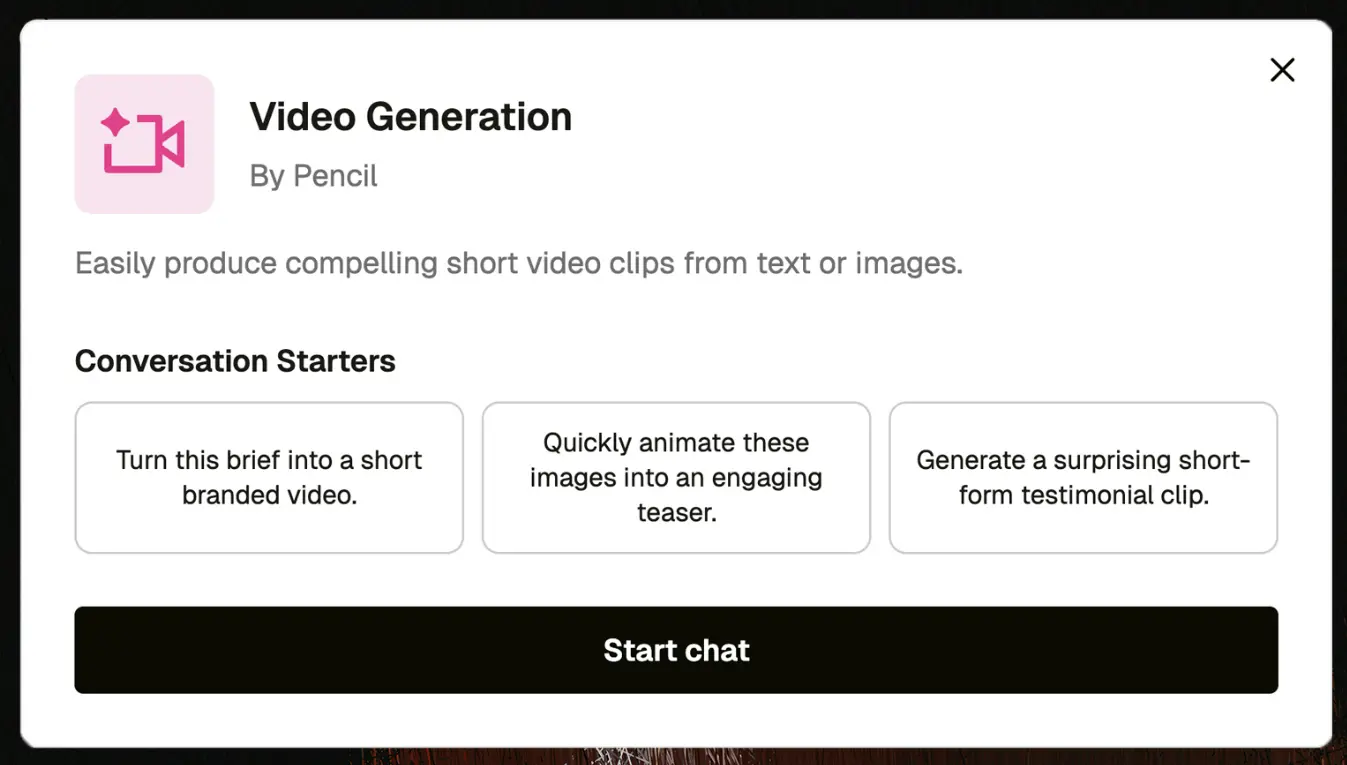
Best Features:
- Turn text prompts into polished ads ready for publishing.
- Generate multiple assets from pre-built templates.
- Adapt, personalize, localize, or translate content for different audiences.
- Produce thousands of ad variations instantly, optimizing performance and reach.
6. GetResponse – Best for Automation Email Marketing
GetResponse is an automated email marketing platform that triggers emails based on customer behaviors and engagement. In recent years, it has added a suite of AI-powered tools to make email campaigns faster, smarter, and more effective.

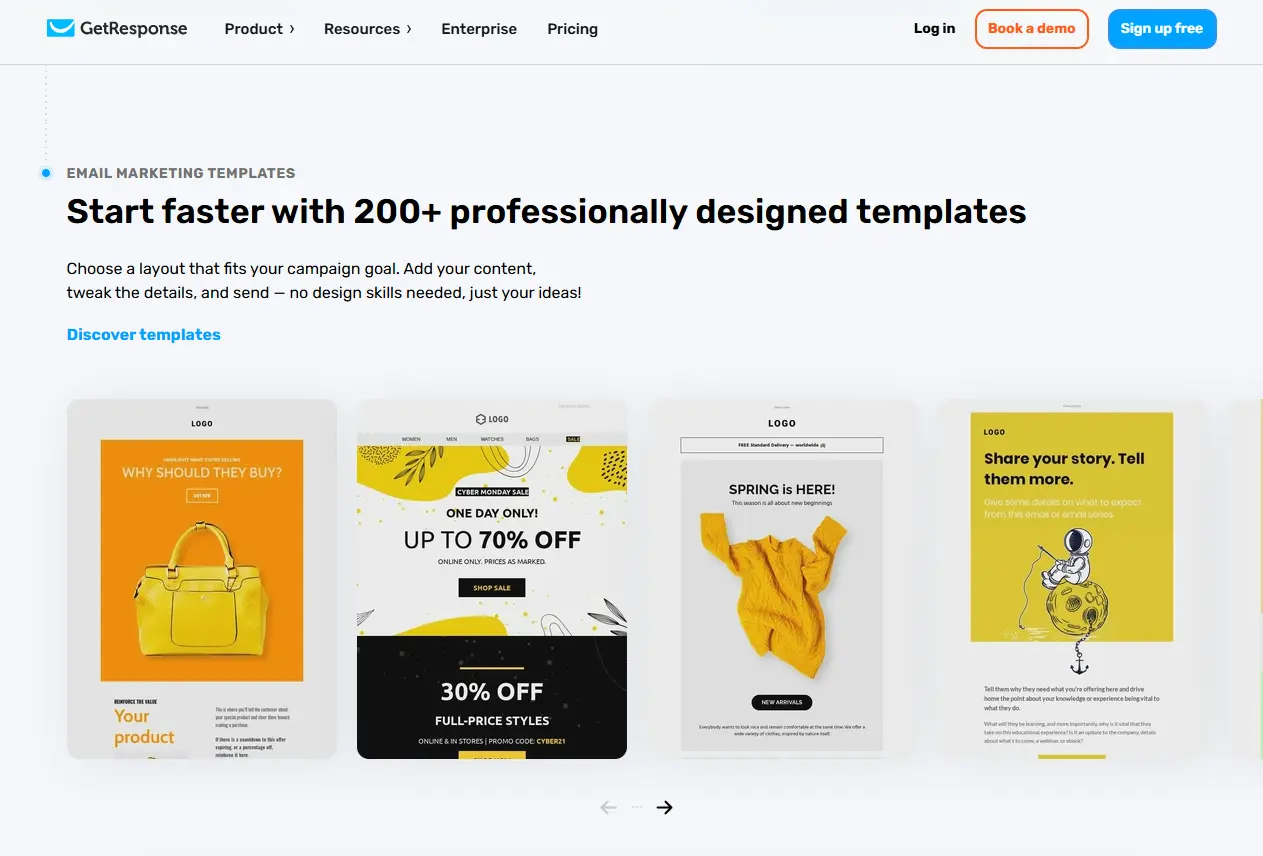
Best Features:
- Launch complete email campaigns in minutes.
- Create full email templates, including copy, images, and subject lines.
- Write and optimize high-performing emails using proven templates and best-practice strategies.
7. Shogun Page Builder – Best for AI Store Builder
Shogun Page Builder is an AI-powered tool that lets dropshippers design professional, high-converting stores with minimal effort. Its intuitive drag-and-drop interface, combined with AI-driven suggestions and templates, helps merchants launch stores faster while maintaining a polished, brand-consistent look.


Best Features:
- Drag-and-drop store design with pre-built sections and templates.
- AI suggests layout, content, and design improvements for better user experience and conversions.
- Optimize pages for SEO automatically to improve search visibility.
- Preview and customize across desktop, mobile, and tablet for a consistent brand experience.
- Seamlessly integrates with Shopify, BigCommerce, and other major platforms.
8. Ali Reviews – Best for Automated Product Reviews
Ali Reviews is a Shopify app that automates product review collection and display to boost credibility and conversions. It pulls reviews from sites like Amazon, AliExpress, Temu, Etsy, eBay, and more, while using AI-powered translation to make reviews accessible in any language.


Best Features:
- 1-click import trusted reviews from multiple platforms including AliExpress, Amazon, Temu, Etsy, and eBay.
- Auto-collect reviews via email flows and offer incentives for photo/video submissions.
- Customizable display options: ratings, review boxes, carousels, pop-ups — fully on-brand.
- AI translation (Gemini) converts reviews into your buyer’s language in seconds.
- CSV import: transfer reviews from other platforms like Loox, Yotpo, or Judge.me.
9. Tidio (Lyro Agent) – Best for Customer Support
Lyro, Tidio’s AI-powered chatbot, engages customers and answers questions using your brand-specific support content. Powered by Claude (Anthropic), Lyro delivers accurate, on-brand responses in under 6 seconds — up to 20x faster than typical human support.

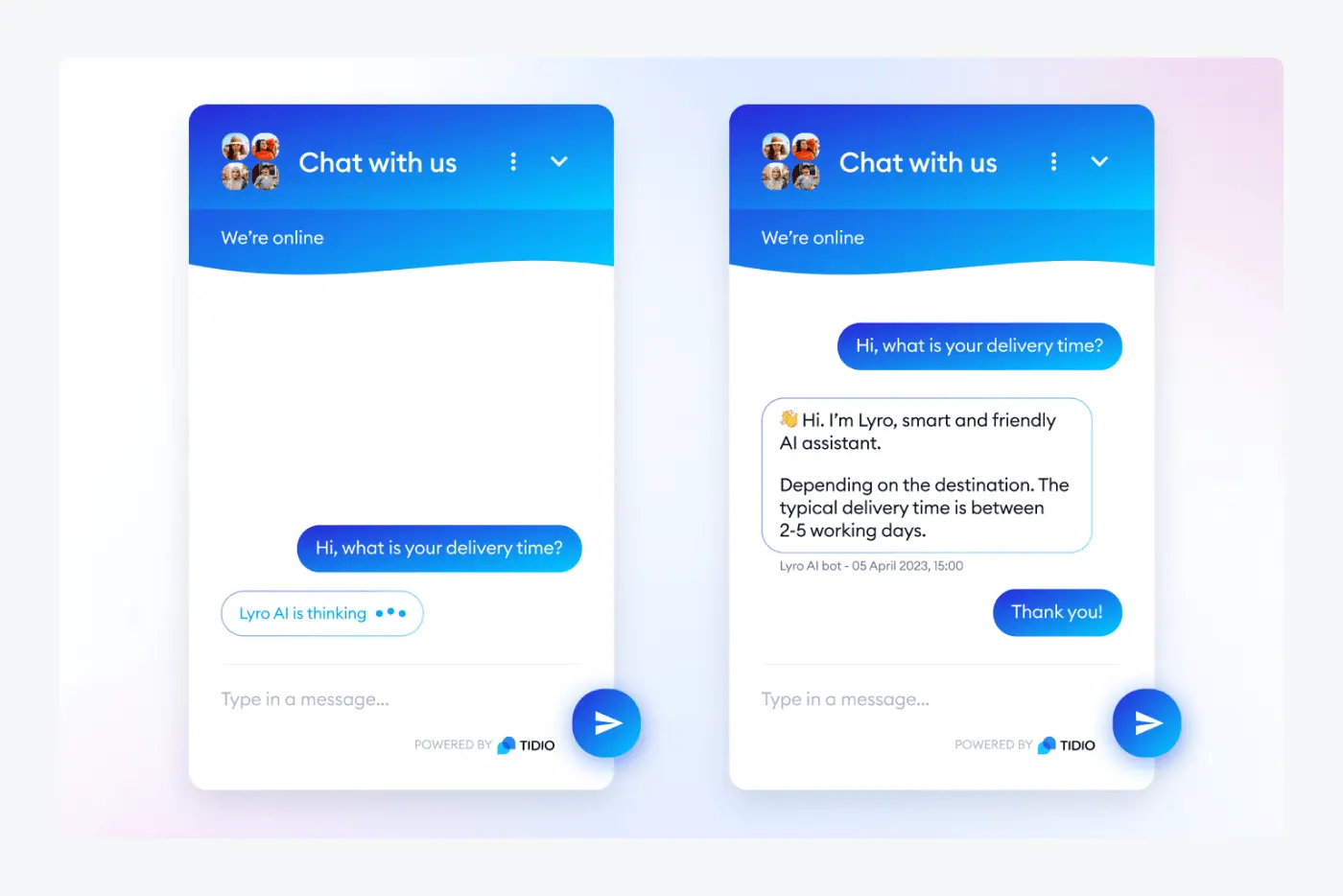
Best Features:
- Automates up to 67% of customer inquiries, reducing manual support by two-thirds.
- Provides instant, human-like responses.
- Uses only your exclusive content for accuracy and brand consistency.
- Seamlessly transfers complex queries to human agents.
- Communicates in multiple languages.
- Easily integrates with Zendesk, Intercom, Salesforce, and more.
10. Soshie AI – Best for Social Media Management & Automated Content Creation
Soshie by Sintra AI is an AI social media manager designed to help businesses plan, create, and publish content across platforms like Instagram, TikTok, Facebook, LinkedIn, and X. It works as a full social media assistant, handling strategy, daily content creation, scheduling, and analytics so sellers can stay active on social media without spending hours managing it.
Trained on thousands of social media best practices, Soshie helps maintain a consistent brand presence, protect brand reputation, and ensure content aligns with marketing goals.
An Extra Step Towards Building Profitable Dropshipping Stores
What seems like a small extra step, in fact, is the key action that separates profitable stores months after they launch dropshipping businesses. We're talking about tracking your profit & loss using the automation app.
With a profit tracker, it will help you automate tracking and managing your overall financial performance - so you can make smarter, data-backed decisions in less time and with less effort.
As the #1 Shopify Net Profit Analytics solution, TrueProfit automatically calculates every expense in your store — from COGS and ad spend to shipping fees and transaction costs — to give you the most accurate picture of your true profitability.


TrueProfit provides all the tools merchants need to fully manage their financial performance:
- Real-time profit tracking: Stay on top of key financial metrics - net profit, profit margin, revenue, cost of goods sold, ad spend, shipping fee, customer acquisition cost, customer lifetime value, and more, all in a real-time analytics dashboard
- Profit per product analytics: Track product profitability & spot the most or the least profitable products.
- Marketing attribution: Monitor marketing effort & identify your low- and high-performing ad channels.
- P&L report: Compare business performance by week, month, or year with detailed profit and loss reports.
- Customer LTV: Understand long-term customer value by comparing retention against acquisition costs.
When TrueProfit runs seamlessly with your AI-powered store, every decision you make — from product scaling to marketing spend — is guided by real-world profit data. It’s the game-changing step that turns your complicated tracking into an ready-to-act-on dashboard and keeps your dropshipping business sustainably profitable.
Final Thoughts
Understanding how to do AI in dropshipping is a good starting point. The next step is to start experimenting with one use case today and let data, not guesswork, lead your next move.
Leah Tran is a Content Specialist at TrueProfit, where she crafts SEO-driven and data-backed content to help eCommerce merchants understand their true profitability. With a strong background in content writing, research, and editorial content, she focuses on making complex financial and business concepts clear, engaging, and actionable for Shopify merchants.






